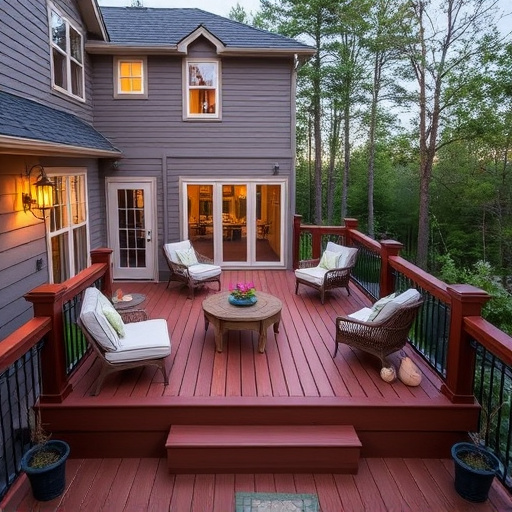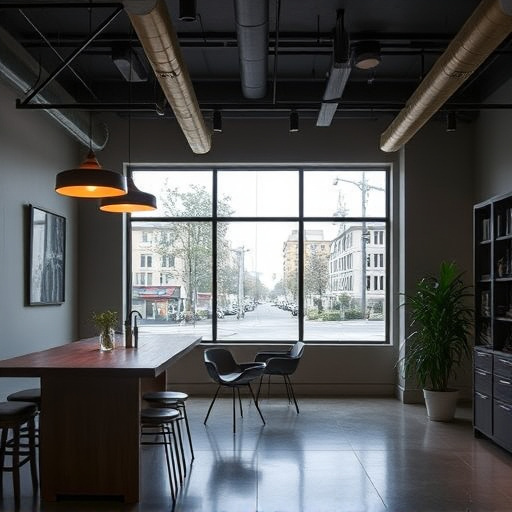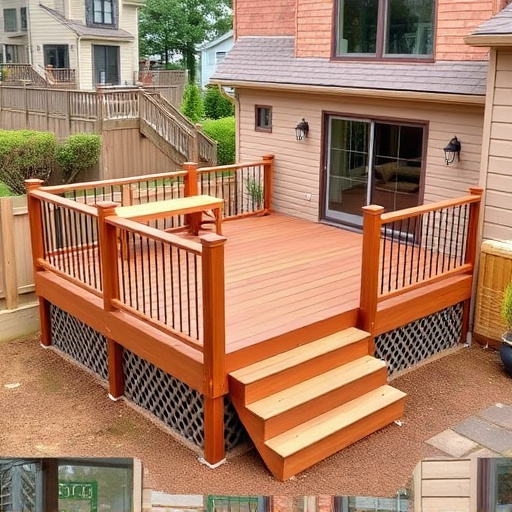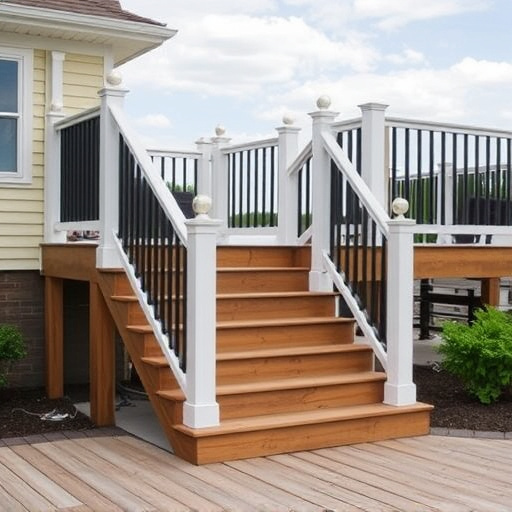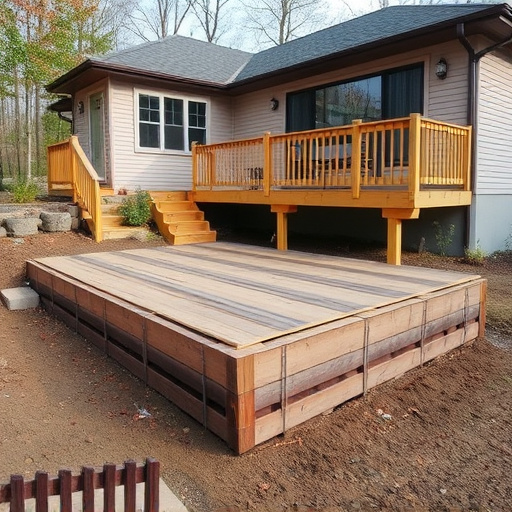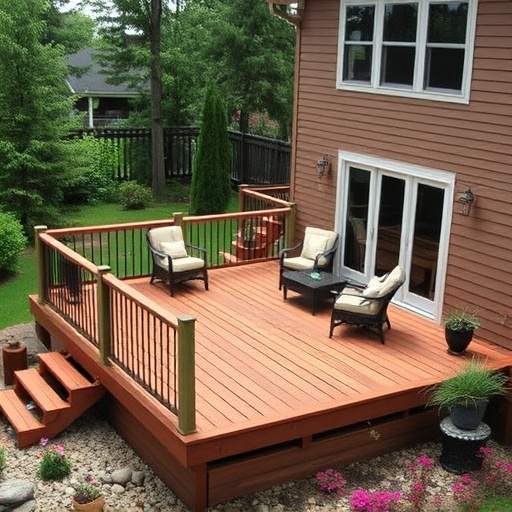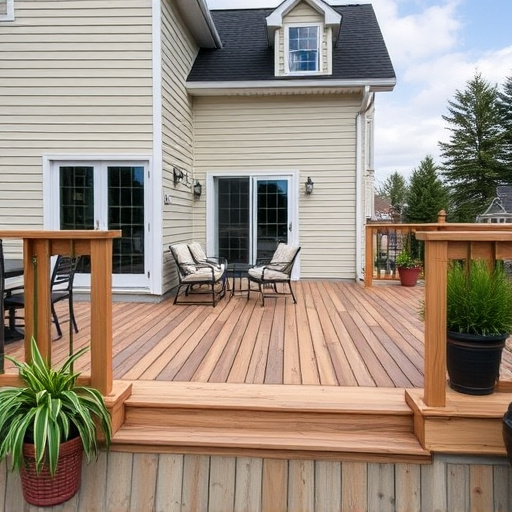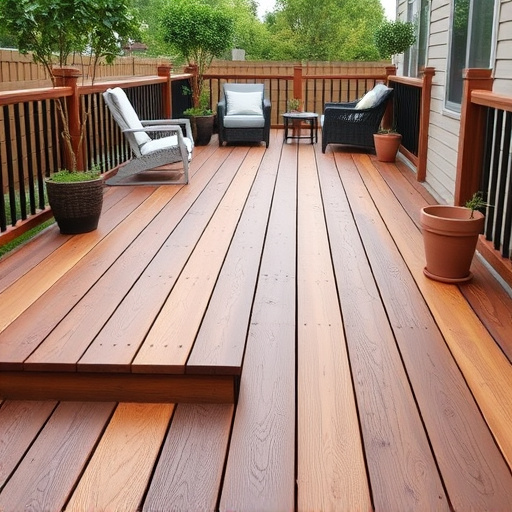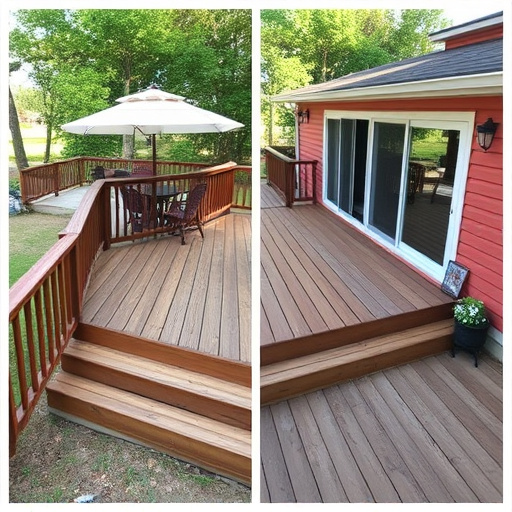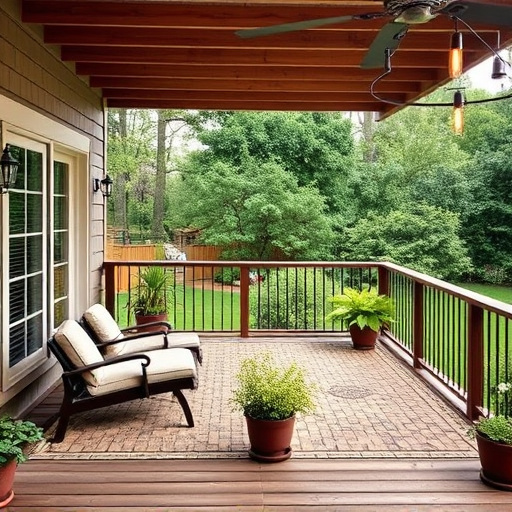When designing a residential decking project, aligning aesthetics with your home's architecture is key. Consider your home's style—modern or traditional—and choose materials that complement striking features like roofing and siding. Select from natural wood or composite decking, considering durability and cost. Blend functionality and visuals by adding seating, grills, lighting, and more. Seamlessly integrate the deck into your exterior with matching colors and textures for a beautiful, cohesive look.
Residential decking is an essential element of modern home design, offering outdoor living spaces that seamlessly blend with interior architecture. This article explores key considerations for achieving architectural harmony through decking, from material choices to integrating functionality and style. Discover how selecting the right deck surface can enhance your home’s aesthetics while creating a practical yet esthetically pleasing outdoor oasis—all crucial aspects of any successful residential decking project.
- Understanding Residential Deck Design: Key Considerations for Architectural Harmony
- Material Choices: Selecting the Right Deck Surface to Enhance Your Home's Aesthetics
- Integrating Functionality and Style: Tips for Creating a Practical Yet Esthetically Pleasing Outdoor Living Space
Understanding Residential Deck Design: Key Considerations for Architectural Harmony

When designing a residential decking project, it’s crucial to consider how it will complement existing home architecture. Harmony between your deck and house is key to creating an aesthetically pleasing outdoor space that seamlessly integrates with your interior. Start by understanding the architectural style of your home; modern homes may benefit from clean-lined, minimalist decks, while traditional homes could embrace more ornate designs.
Material choices play a significant role too. If your home features striking residential roofing or captivating siding services, select decking materials and designs that echo these elements. For instance, dark wooden decks can complement rich roofing, while natural stone or tile patterns on the deck floor might mirror nearby siding details. This harmonious approach ensures your outdoor area becomes an extension of your home’s unique character.
Material Choices: Selecting the Right Deck Surface to Enhance Your Home's Aesthetics
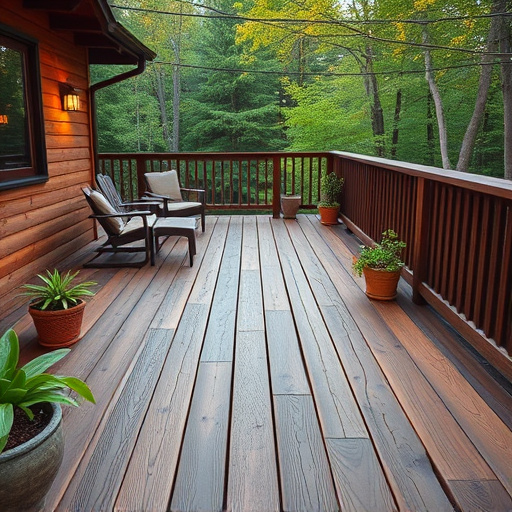
When it comes to residential decking, material choices play a pivotal role in enhancing your home’s architectural aesthetics. The right deck surface can seamlessly integrate with your home exterior services, complementing the overall design and style. For instance, natural wood decks offer a timeless appeal, adding warmth and character to any property. However, consider the low-maintenance alternative of composite decking, which requires less upkeep and comes in various colors and textures to match different architectural themes.
Beyond aesthetics, material selection also influences durability and cost. Commercial roofing experts often recommend materials that can withstand exposure to elements, ensuring longevity. Sideings services professionals can guide homeowners in choosing surfaces that complement existing cladding or siding, creating a cohesive look for the entire home exterior. Whether prioritizing visual appeal, low maintenance, or long-term investment, thoughtful material choices are key to transforming your residential decking into an eye-catching feature that boosts your home’s curb appeal.
Integrating Functionality and Style: Tips for Creating a Practical Yet Esthetically Pleasing Outdoor Living Space
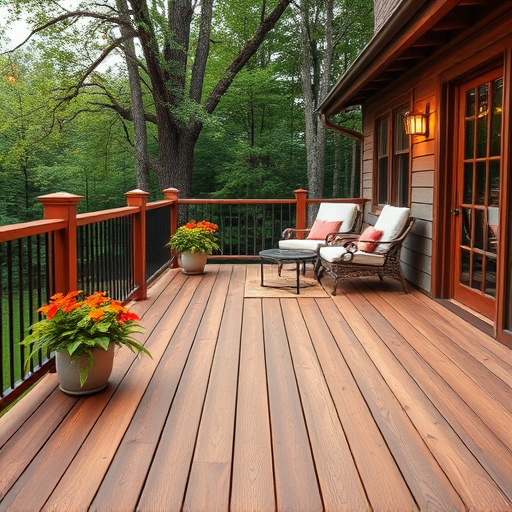
When designing an outdoor living space through residential decking, achieving a seamless blend of functionality and style is essential.
Consider the deck as an extension of your home’s interior, complementing its architecture and design elements. Choose decking materials that not only withstand the elements but also elevate the aesthetic appeal of your property. Natural woods like cedar or hardwood offer durability and visual charm, while composite materials provide low-maintenance options without compromising on looks. Integrate comfortable seating areas, a built-in grill, or an outdoor kitchen to make the space practical for entertaining and relaxation. Simultaneously, incorporate lighting fixtures, privacy screens, or visually appealing railings to enhance the style and create a welcoming atmosphere.
Think beyond the deck itself and consider its integration with your home’s overall exterior. Complementing roofing and siding installations can reinforce the design theme, creating a cohesive look throughout. For example, selecting decking that mirrors the color palette of your siding or incorporates similar textural elements can strengthen the architectural flow. Moreover, incorporating functional features like a shaded pergola or a fire pit not only adds visual interest but also provides versatile spaces for different weather conditions, ensuring your outdoor living area remains enjoyable all year round.
When designed with architectural harmony in mind, residential decking can transform an outdoor space into a stunning complement to one’s home. By understanding key design considerations, carefully selecting materials that enhance aesthetics, and integrating functionality with style, homeowners can create a beautiful and practical outdoor living area. Incorporating the right residential decking enhances the overall allure of a property, providing both visual appeal and valuable living space.




